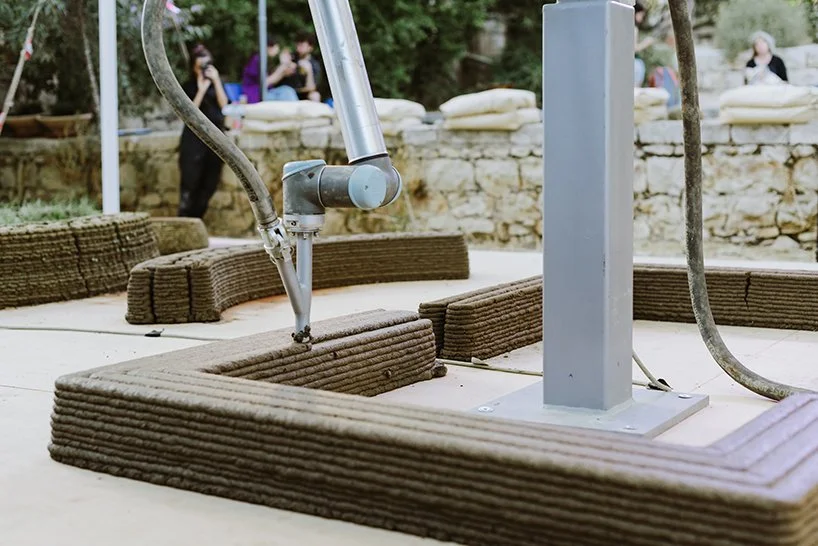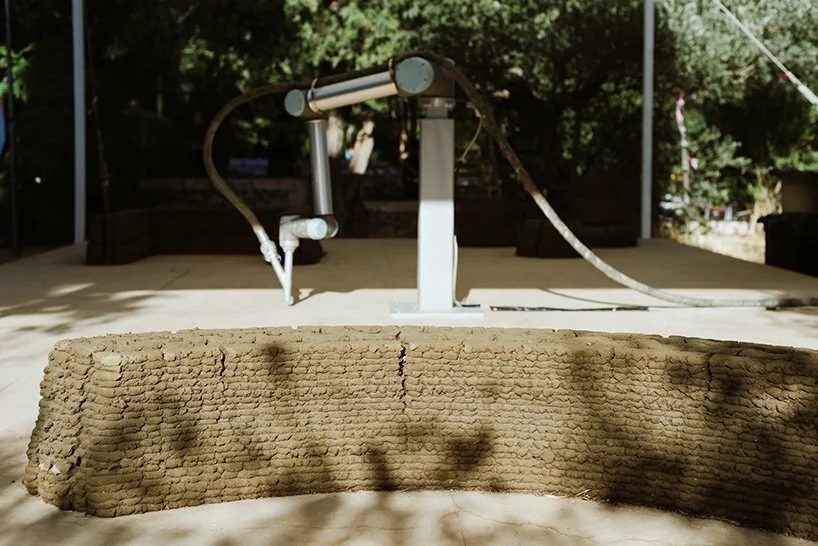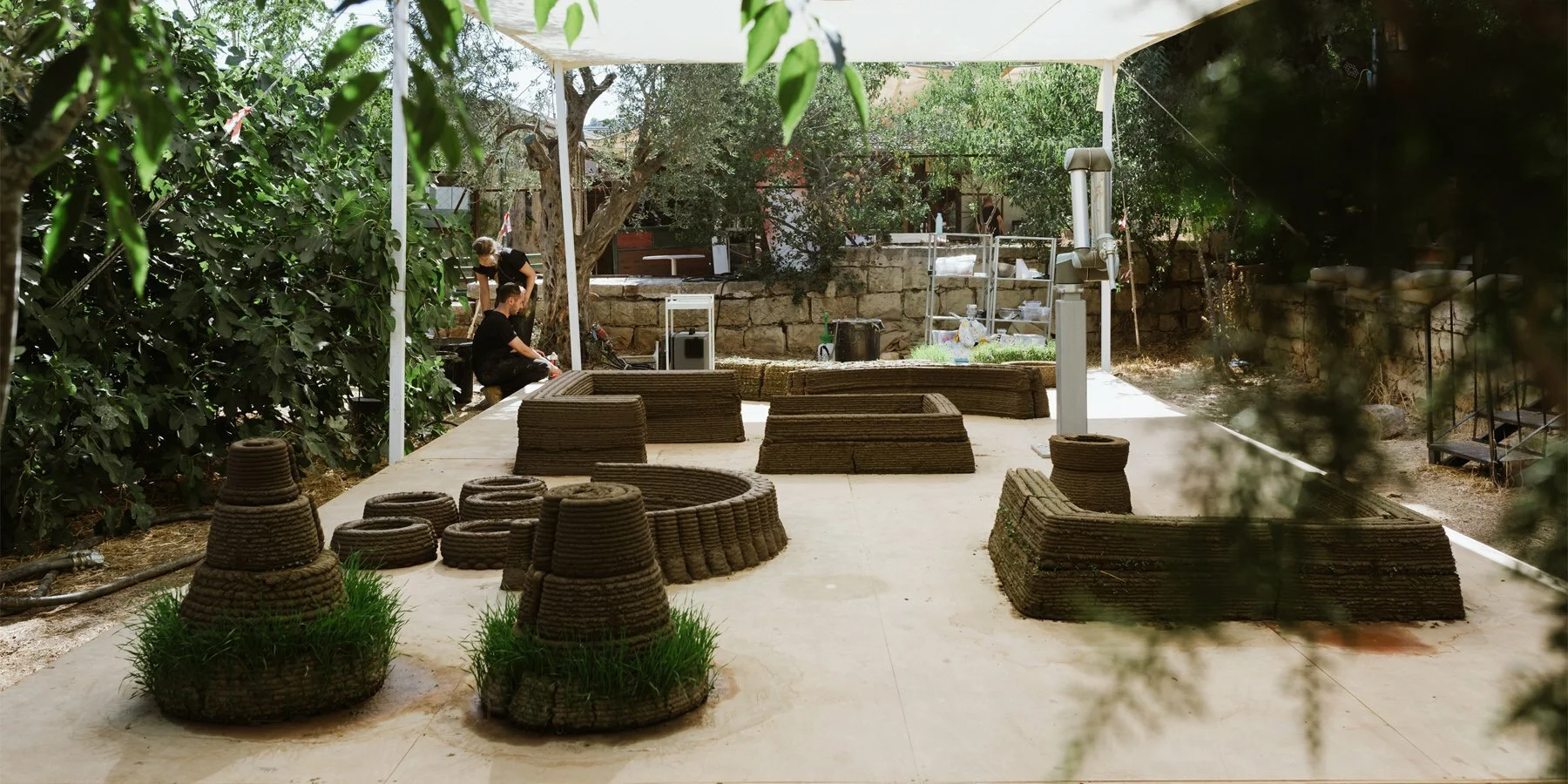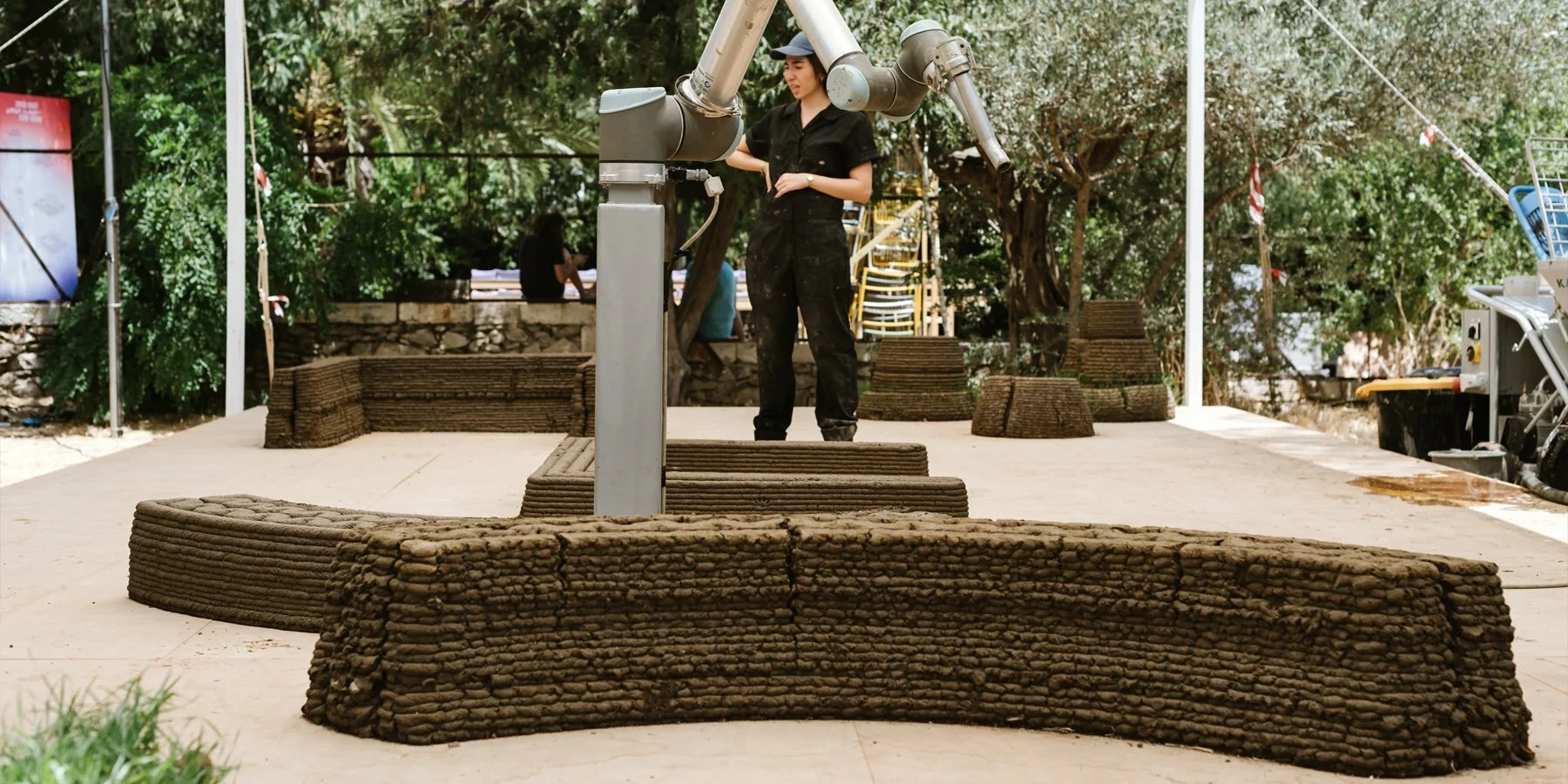To Grow a Building examines architecture cultivated from organic soil through robotic 3D printing. Seeds embedded within the structures sprout into living facades, while roots reinforce the biodegradable walls. This blend of digital fabrication and nature offers sustainable alternatives to concrete, imagining buildings that grow and adapt like ecosystems.
To Grow a Building
Feb 11, 2025
Connetion : +52321
Shares : 26327
At Jerusalem Design Week, designers Elisheva Gillis, Gitit Linker, Danny Freedman, Noa Zermati, Adi Segal, Rebeca Partook, Or Naim, and Nof Nathansohn presented To Grow a Building, a visionary exploration of architecture’s living future. Rather than assembling inert materials, their concept imagines buildings as organisms that take root.
The team utilised a robotic arm to 3D print small structures using organic soil enriched with embedded seeds. Over time, these seeds germinate and climb across the facades, transforming walls into thriving green surfaces. As roots penetrate the printed forms, they reinforce the biodegradable soil, fusing growth with construction in a self-supporting cycle.
This experiment questions architecture’s dependence on resource-intensive materials such as concrete, offering instead a poetic model where nature becomes both medium and collaborator. By merging botanical life with digital fabrication, the designers propose a cityscape where buildings evolve, adapt, and sustain themselves.
The project reflects an urgent environmental vision: cities that grow in tandem with ecological systems, reducing waste and rethinking the role of construction in climate-conscious design. More than a technical study, To Grow a Building invites audiences to reconsider the boundary between the built and the natural—suggesting a world where the act of building is inseparable from the act of cultivating life.
在耶路撒冷設計週上,設計師 Elisheva Gillis、Gitit Linker、Danny Freedman、Noa Zermati、Adi Segal、Rebeca Partook、Or Naim 與 Nof Nathansohn 推出《To Grow a Building》──一項展望未來的建築實驗。作品不再以冰冷材料組構,而是讓建築如同生命般生長。
團隊利用機械手臂以有機土壤進行 3D 列印,並在結構中植入種子。隨著時間推移,種子發芽、蔓延於立面,牆體逐漸化為綠意盎然的植生表面。根系深入土壤牆體,同時鞏固並強化可分解的結構,使建築與自然形成自我循環。
此研究挑戰對混凝土等高耗能材料的依賴,轉而展示建築與自然共生的可能。當數位製造與植物生長相結合,城市被想像為可適應、可演化、能自我維繫的有機體。
《To Grow a Building》不僅是技術提案,更是一種環境呼籲:重新思考城市如何在永續與生態中尋找平衡,讓「建造」同時意味「培育生命」。
Elisheva Gillis, Gitit Linker, Danny Freedman, Noa Zermati, Adi Segal, Rebeca Partook, Or Naim, and Nof Nathansohn
At Jerusalem Design Week 2022, the design collective comprising Elisheva Gillis, Gitit Linker, Danny Freedman, Noa Zermati, Adi Segal, Rebeca Partook, Or Naim, and Nof Nathansohn unveiled *To Grow a Building*—an experimental performative lab set at Hansen House, the design and media centre in Jerusalem.
Using a customised robotic arm guided by digital workflows, the team 3D‑printed layered forms from a soil-and-seed mixture, creating structures that sprouted real vegetation over time. Seeds embedded in the material germinated to cloak the surfaces in living greenery, while roots grew inward to reinforce the biodegradable walls. The installation challenges conventional architecture’s dependence on industrial materials, such as concrete and steel, proposing instead a local, organic, and regenerative building method.
在 2022 年耶路撒冷設計週上,由 Elisheva Gillis、Gitit Linker、Danny Freedman、Noa Zermati、Adi Segal、Rebeca Partook、Or Naim 及 Nof Nathansohn 組成的設計團隊,在耶路撒冷設計與媒體中心 Hansen House 展出《To Grow a Building》表演式實驗裝置。
團隊使用自製機械手臂搭配數位工作流程,3D 列印以土壤和種子混合而成的層疊結構,隨時間展現植物生長。植入其中的種子發芽,將建築表面覆蓋成活綠的植生立面,內部的根系向內滋長,鞏固可生物分解的牆體。此裝置挑戰傳統建築對混凝土和鋼材等工業材料的依賴,倡議當地、自然且具再生潛力的建築形式。
Project Supported by: Rogovin
All the images courtesy of The Team


















